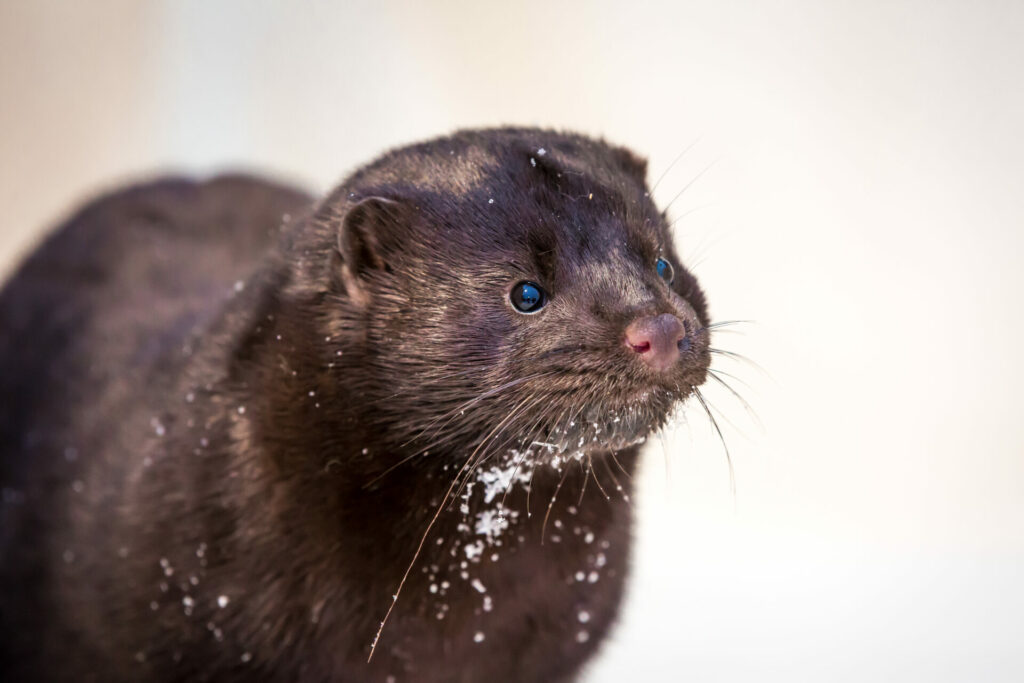In May 2022, I wrote about the launch of a European Citizen’s Initiative (ECI) that is very close to my heart as it calls on the European Commission to ban fur farming and the placement of fur products across the European market. In only eight months Fur Free Europe has already collected more than 1.4 million signatures (and counting).
This means that we are very likely to reach the 1 million validated signatures needed for the European Commission to provide a formal answer to the rightful demands of European citizens. It also means that, most probably, Fur Free Europe will become one of only 9 successful ECIs (out of 97 registered initiatives). This being the case, 5 out of these 9 successful ECIs will be animal-welfare related, as only recently we learnt that the ECI “Save Cruelty Free Cosmetics” reached a staggering 1.2 million verified signatures. The others were Stop Vivisection (2015), End the Cage Age (2020), Save Bees and Farmers (2022), Stop (shark) Finning - stop the trade (2022).
We do not need to look much further for proof that European citizens, even in troubled times, deeply care for animals and want the European Commission to improve animal welfare across the board.
For me, these results are equally mind-blowing and unsurprising. Being at the forefront of the European and global animal protection movement, I am well aware of the importance that people attach to animal welfare. In the EU, we are privileged to have the ECI instrument, which is explicitly tailored to citizens who want the legislator to address a specific area of concern. It is a precious, if somewhat complex and energy-intensive, tool. Many laudable initiatives do not make it to the mark of 1 million validated signatures, sometimes not even remotely close.
In light of this, the fact that animal welfare ECIs are often smashing the threshold should be taken very seriously by the European Commission. Dismissing animal welfare concerns as naive or based on emotional arguments, as we hear all too often in certain lobbying circles, just won’t cut it anymore.
Most certainly, in the specific case of fur production, there is no denying that cruelty to animals is an important component of the contempt that many people feel for the industry. There are almost too many investigations to count, and, quite frankly, nothing to save in the face of such treatment of sentient beings. After all, this is cruelty for fashion, thus totally unnecessary and, arguably, replaceable.
Anyway, if possible, let’s leave aside for a moment the ethical concerns and concentrate on other, less “emotional”, aspects. Let’s crunch some numbers, for instance. The contribution of the fur industry to vibrant rural communities is a myth. Fur farming is mostly a small-scale and part-time activity carried out during the killing and pelting season. The fur industry used to estimate the number of full-time jobs to be 10 full-time jobs per farm.
This shows that there is no economic case when it comes to fur farming. On the contrary, a ban, followed by a well planned transition period and compensation schemes, could bring new opportunities for farmers to start new business aligned with the ambitions of the EU Green Deal and the UN SDGs.
Let us also not forget that while this economic sector is operational, we could all eventually pay a high price in terms of public health. A recent report found that animals kept and killed on fur farms, like mink, foxes and raccoon dogs, are all susceptible to SARS-CoV-2 and influenza A viruses. If this wasn’t enough, minks kept for fur farming are also sensitive to highly pathogenic avian influenza (HPAI).
Recently, an infection with HPAI was detected on a Spanish mink farm. A study on this outbreak concluded that minks can potentially transmit avian influenza to humans. Many species farmed for fur can act as “mixing vessels” for viruses that can also cause human infection, potentially fostering the emergence of future pandemics. Yet we do not seem to have learnt our lesson: it was discouraging to see that Sweden dropped its restrictions on mink farming and that Denmark (where tens of millions of minks were gassed due to SARS-CoV-2 outbreaks) is now importing new breeding stock to restart its fur farming business.
One is left to wonder what it will take for this industry to be banned for good. I hope that it won’t be another pandemic, but rather the outcome of a democratic process. Beside the more than 1.4 million voices of European citizens, the Commission can also rely on the support of a broad representation of Member States and of many cross-party members of the European Parliament, including some that have formed a brand new dedicated working group. The time has never been more right. Especially, let me say it, for the millions of foxes, raccoon dogs, minks and other wild animals that are living and dying in squalor for our vanity.


